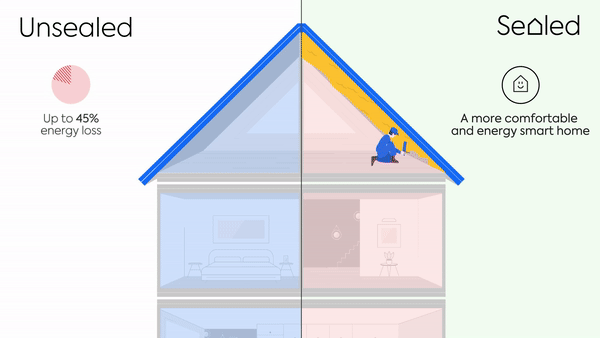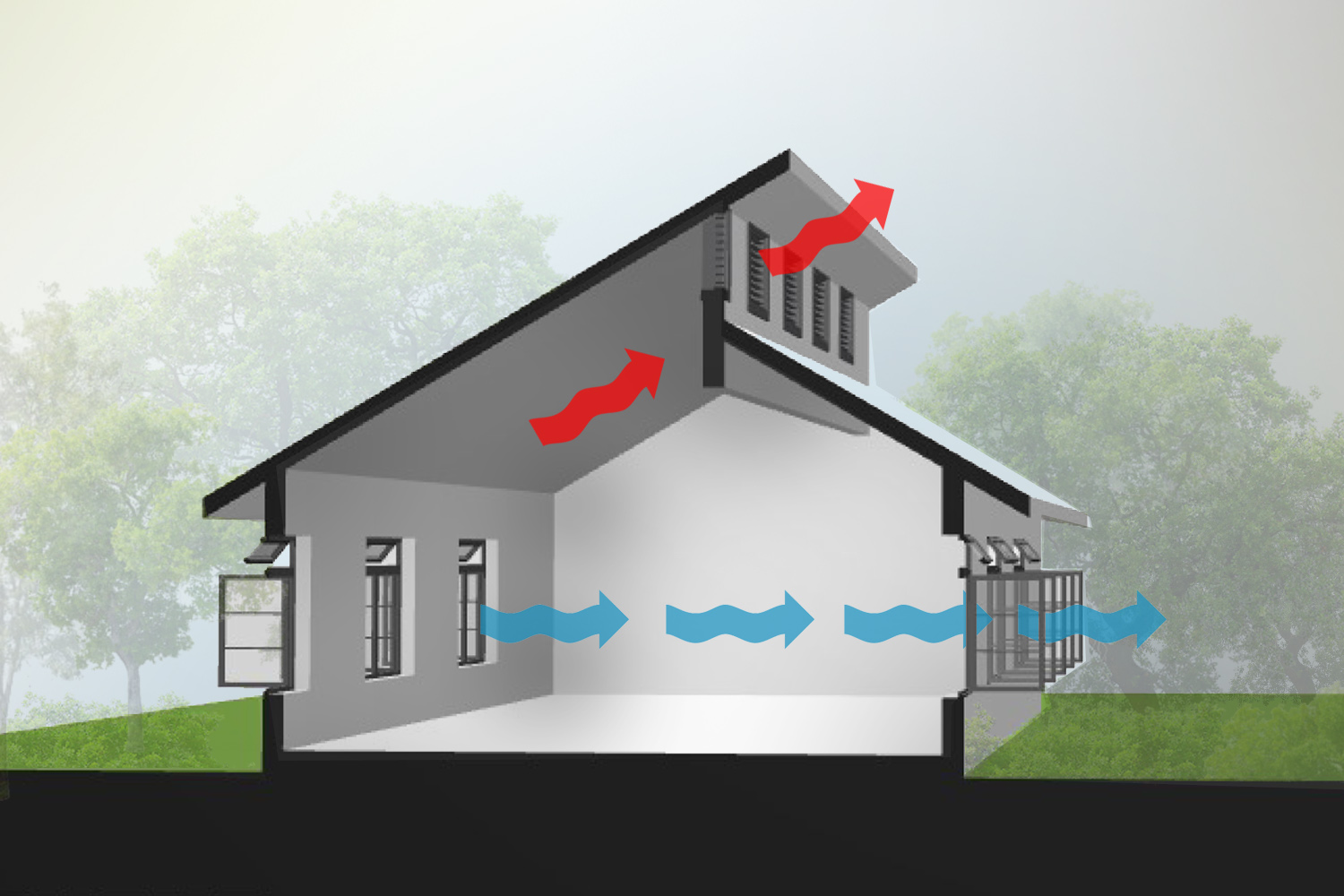Professional Tips for Maintaining Home Ventilation Melbourne Systems
Understanding the Value of Home Ventilation for a Healthier Living Setting
Home ventilation plays an important role in keeping a healthy and balanced living environment. It assists in the exchange of exterior and interior air, which is necessary for boosting air high quality. Without proper air flow, homes can come to be reproducing premises for pollutants and irritants. The effects of poor air flow can be substantial. This raises the questions of just how property owners can successfully carry out air flow approaches to guard their wellness and wellness. Comprehending these approaches is crucial.

The Essentials of Home Air Flow
Home ventilation acts as an important component of indoor air quality and comfort. It entails the process of trading stale indoor air with fresh outdoor air, consequently decreasing humidity and managing temperature. Proper air flow systems can consist of natural methods, such as open home windows and vents, along with mechanical systems, such as exhaust fans and air exchangers. Efficient home ventilation assists avoid issues like interior mold and mildew growth and the accumulation of unsafe fragments. It additionally boosts total energy effectiveness, as well-ventilated areas can maintain comfy temperatures with less reliance on home heating and cooling down systems. Comprehending the basics of home ventilation is essential for home owners looking for to create a healthier living setting on their own and their households.

Common Sources of Indoor Air Pollution

Numerous might not realize it, interior air contamination can originate from different sources within a family. Typical contributors include volatile organic substances (VOCs) given off from paints, solvents, and cleaning products. Home appliances, such as gas stoves and fire places, can release dangerous gases like carbon monoxide gas and nitrogen dioxide. Furthermore, mold and mold flourish in moist areas, launching spores that impact air quality. Pet dander, allergen, and plant pollen can build up inside your home, more aggravating pollution levels. Smoking indoors creates harmful chemicals that stick around in the air. Ultimately, constructing materials, consisting of asbestos and formaldehyde, can off-gas dangerous compounds. Recognizing these resources is important for keeping a healthier interior environment and advertising effective ventilation strategies.
Wellness Impacts of Poor Ventilation
Interior air pollution can have significant wellness ramifications, specifically when air flow is inadequate. Poor ventilation can bring about the build-up of unsafe contaminants, such as unstable natural compounds, mold, and particulate matter. This build-up might result in breathing concerns, consisting of asthma, allergic reactions, and persistent obstructive pulmonary disease. People may experience signs like frustrations, exhaustion, and inflammation of the eyes, nose, and throat. At risk populations, such as children and the elderly, are at greater threat for severe health effects. Long-lasting direct exposure to badly ventilated atmospheres can likewise contribute to more major problems, consisting of cardiovascular illness. Making sure appropriate ventilation is vital for maintaining a healthy living environment and reducing the threat of wellness complications connected with indoor air contamination.
Reliable Air Flow Methods for Your Home
Appropriate air flow is crucial for preserving a healthy and balanced indoor environment, and applying reliable methods can significantly boost air high quality. Property owners can begin by making certain that exhaust fans are mounted in washrooms and cooking areas to remove excess dampness and odors. Opening up windows frequently permits fresh air to distribute, specifically during light weather condition. In addition, utilizing air cleansers with HEPA filters can help record airborne contaminants. For homes with home heating and cooling systems, preserving heating and cooling systems and transforming filters frequently is vital for peak performance. Including natural air flow strategies, such as cross-ventilation, can also her explanation improve air movement. Ultimately, sealing any leaks in windows and doors avoids undesirable drafts, which can interrupt regulated airflow, inevitably resulting in enhanced interior air quality and comfort.
Maintaining Optimal Air Quality Year-Round
To preserve excellent air high quality year-round, home owners need to take on a proactive method to managing their indoor environment. On a regular basis keeping track of indoor air high quality is vital; this consists of monitoring for contaminants such as dirt, mold and mildew, and volatile natural substances (VOCs) Applying effective air flow systems, such as exhaust followers and air purifiers, can considerably decrease air-borne pollutants. Additionally, routine maintenance of a/c systems warranties peak efficiency and air flow. House owners need to additionally take into consideration moisture degrees, as extreme dampness can lead to mold and mildew development. Seasonal modifications may necessitate adjustments in ventilation approaches find this to suit differing outdoor air high quality. By prioritizing these methods, house owners can create a healthier living room, advertising overall well-being for all occupants throughout the year.
Frequently Asked Concerns
How Can I Inform if My Home Requirements Better Ventilation?
To establish if a home needs better air flow, one need to observe indicators such as consistent moisture, mold and mildew growth, stuffy smells, condensation on windows, or boosted allergy signs and symptoms, suggesting insufficient air movement and possibly inadequate indoor air high quality.
What Are the Indications of Poor Indoor Air Quality?

Can Houseplants Improve Indoor Air Quality Properly?
The efficiency of houseplants in improving interior air quality is questioned. While some research studies recommend they can take in toxins and create oxygen, their overall effect may be marginal compared to appropriate air flow and air filtering systems.
Just how Usually Should I Modification My Air Filters?
The frequency of air filter adjustments normally relies on use and filter kind. Typically, it is advised to change filters every three months, though families with allergies or animals might require more constant adjustments for suitable efficiency.
Are There Any Type Of Details Ventilation Systems for Allergic Reaction Sufferers?
Many ventilation systems, such as HEPA-filtered systems, successfully lower irritants in the air. Home Ventilation Melbourne. These systems trap dirt, plant pollen, and pet dog dander, offering allergic reaction patients with a cleaner, much healthier indoor setting while managing air quality successfully
It helps with the exchange of interior and outside air, which is crucial for enhancing air high quality. Home ventilation serves as a crucial part of indoor air quality and comfort. It entails the procedure of exchanging check this stale indoor air with fresh outdoor air, thereby reducing humidity and controlling temperature. Interior air contamination can have considerable health and wellness effects, specifically when air flow is insufficient. Proper ventilation is vital for preserving a healthy interior atmosphere, and executing effective techniques can significantly improve air top quality.